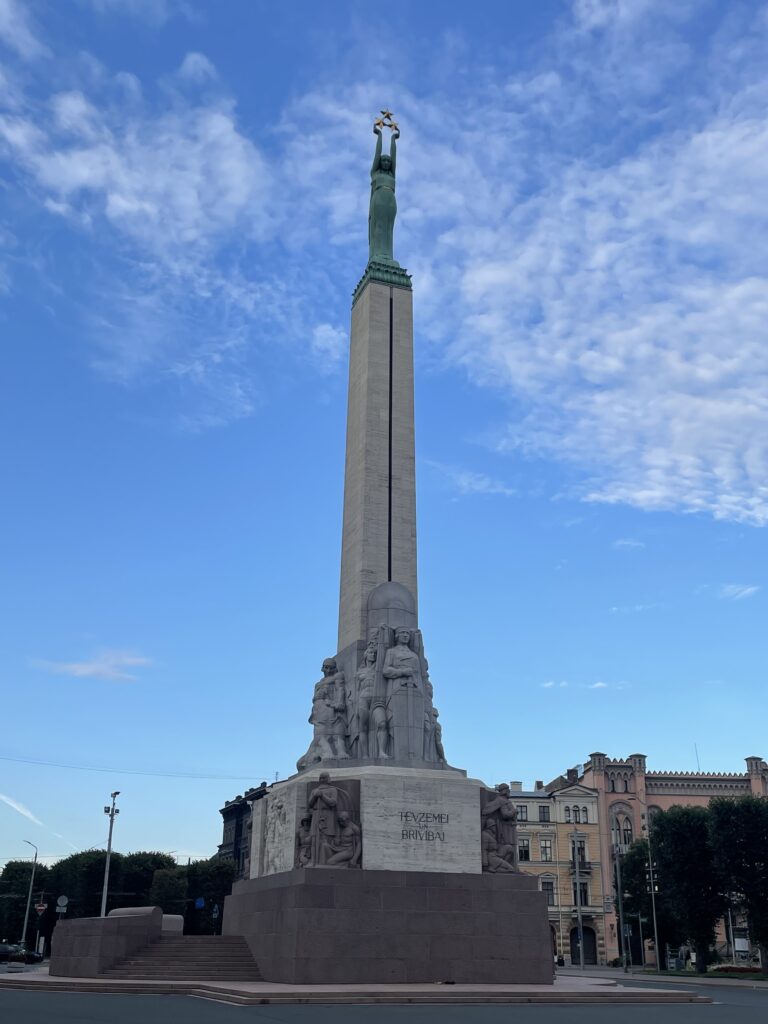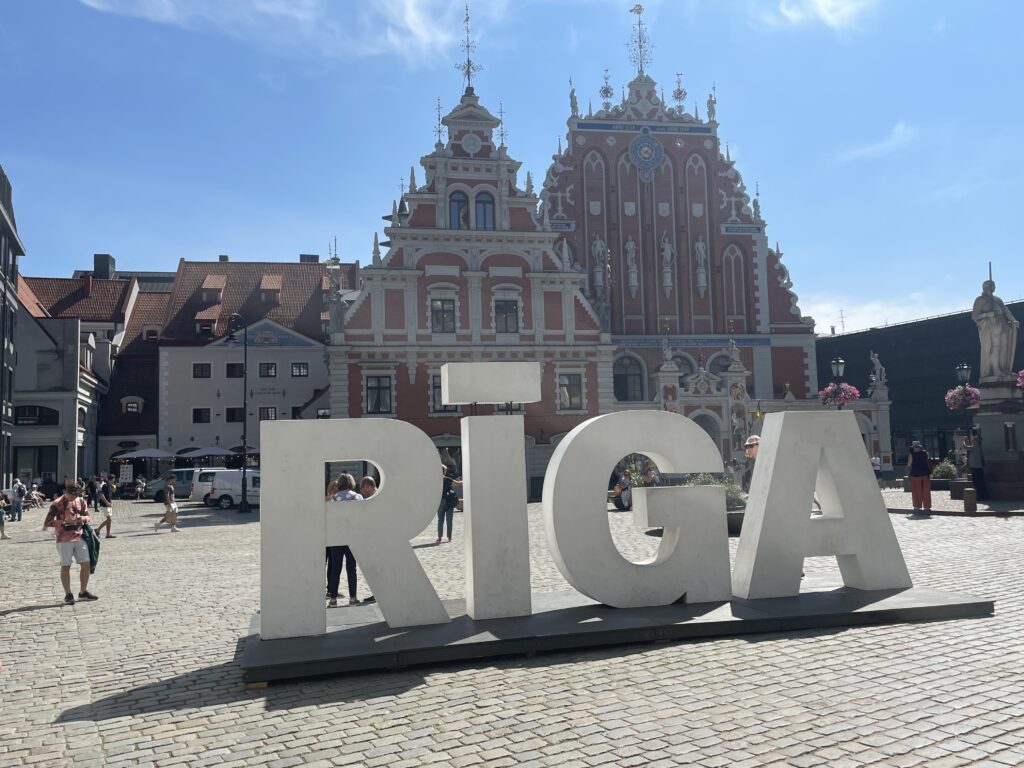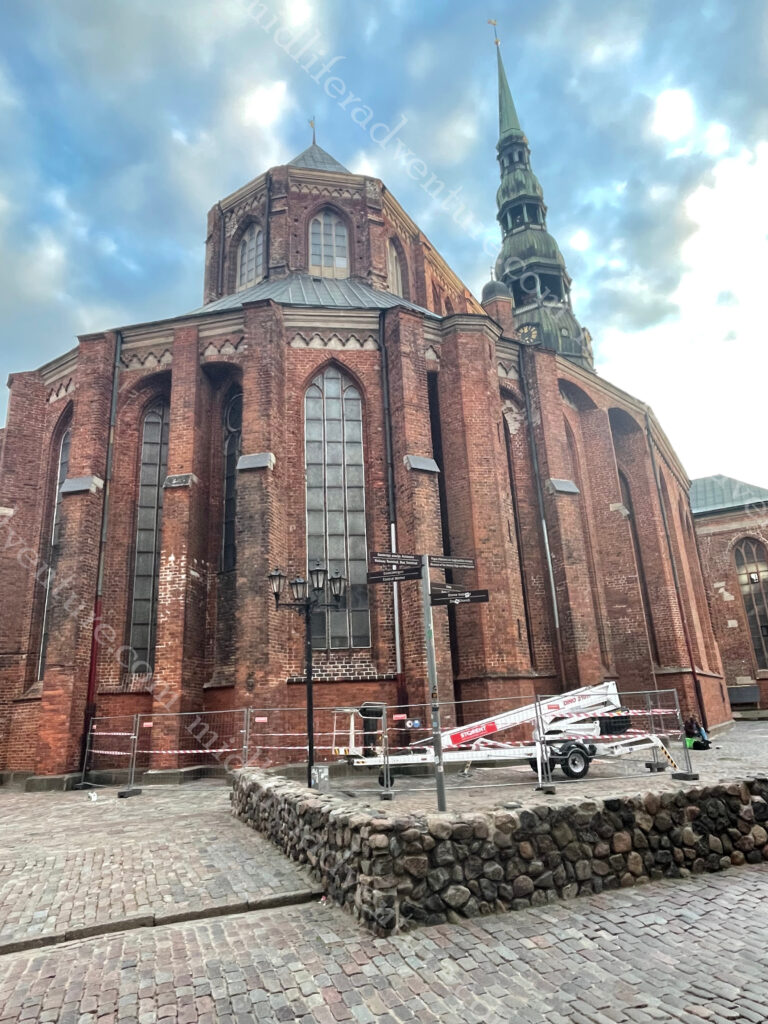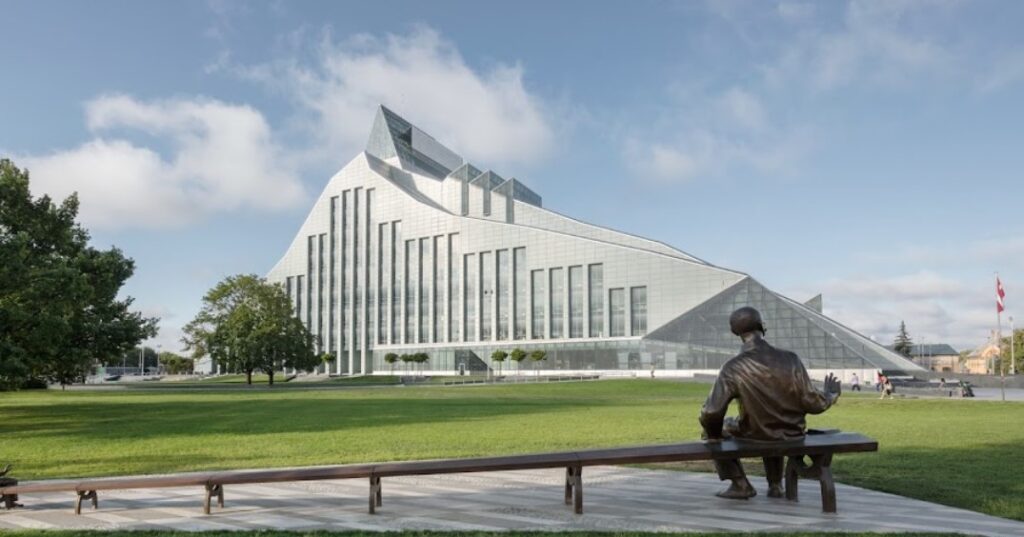
Latvia is one of the three Baltic states (with Estonia and Lithuania). It borders Russia (east), and Belarus (southeast) and shares a maritime border with Sweden (west).
Once again this is a nation that we both had little knowledge of before entering. Like many of the nations in and around eastern Europe, they have been at the mercy of the big nation states around them (notably Russia and Germany). It finally got its independence at the end of WWI but was forcibly subsumed into the Soviet Union at the beginning of WWII. It was invaded by Germany in 1941 and retaken by Russia in 1944.
The Singing Revolution
At the end of the Cold War the three Soviet-occupied Baltic countries of Estonia, Latvia, and Lithuania sought and ultimately peacefully won their independence. It manifested in a series of events between 1987 and 1991 where widespread dissatisfaction with the Soviet system provoked mass demonstrations (peacefully singing). The Latvian official independence occurred on 21 August 1991.

The area that is now Latvia has a history dating back to 3000 years BC. One of the last corners of Europe to join Christendom, Latvians are still very much pagans at heart. They worship nature by jumping over bonfires at Midsummer Eve, and many surnames are about birds, animals or trees. Today with a population of just under 2 million,
Riga
Our time throughout the Baltics was short, but the long summer days (20 hours of daylight) gave us more than enough time to look around and get our tourist on. As with most of the European older towns and cities, most of the old touristy stuff is in the central area, or Old Town area of the city. The rest of the place is just like any other modern city and the surrounding suburbs. Interesting enough, but not really blog worthy or anything different.



Our first port of call, having got off the train was to hit the Riga Central Markets. The markets are set up in a series of five WWI Zeppelin aircraft hangars. It covers a vast floor space and is Europe’s largest market. There are more than 3,000 vendors that sell an impressive range of fresh local produce. The stalls are divided neatly into each hangar with meat, fish, dairy, and vegetables all found separately.
We had limited time on day one so did a quick scoot through vowing to come back tomorrow for our lunch. This vow was based upon seeing some of the most amazing deli meats and cheeses that can be found. Add to this some really delicious looking other random items and how could you not want to go back and gorge yourself.
As it turned out this was a mistake as the next day was Monday and the food court bit was closed. There was still much of the fresh fruit and produce, and being berry season the quantity, quality and price of the berries put our measly offerings back home to shame.

So our first evenings walk was aiming for the Freedom Monument.
It is a 42 meter tall monument honouring the soldiers killed during the Latvian War of Independence (1918–1920).
It is considered a symbol of the freedom, independence, and sovereignty of Latvia.
But to get there we found ourselves walking through the abundance of green space that is throughout Riga. For an old city it really is fantastically well laid out with a ton of green areas for the people to enjoy. Throw in the usual mix of old buildings and you immediately get a great feel about the place.







The next morning it was up and into it. So we headed down to the markets, only to be disappointed. We checked out where we would be leaving the next day (bus station) and made out way into old town once again to do the tourist thing.

The House of the Blackheads was originally built in 1334 as a warehouse, meeting and celebration place for merchants.
During the 15th century it was used by the Brotherhood of Blackheads, a guild for unmarried merchants, shipowners and foreigners in Riga.

Over the years, many citizens of Riga became interested in the property, and carried out different works to expand and reform it, following a purely Gothic style. However, the old House of the Blackheads was completely destroyed during World War II.
The National Opera and Ballet was a nice enough building in the midst of the gardens and green spaces.


St. Peter’s Church is the highest church in Riga and a significant Gothic-style 13th-century architectural monument.
The tower is more than 130 meters tall and was completed at the end of the 15th century.
Since then it has been destroyed and rebuilt several times. In 1666 it collapsed, in 1721, lightning struck the tower and it burned down and during WWII the church and tower burned down.
The National Library of Latvia sits on the other side of the river (the Daugava) from Old Town. The architecture is seriously cool.

The Old Town has an interesting architecture mix and most of the buildings have the status of cultural monuments. Almost everywhere you look in the old town area are some seriously nice buildings. It is really clean and well maintained and the people are happy, friendly and accommodating.







The streets and squares of Old Riga open up to countless restaurants, cafes and bars. Having come from Prague and Poland and heading north we are noticing a considerable increase in the pricing as we get closer to Scandinavia.











With almost 500 km of coast, Latvia has tons of beaches added to this over half its territory is covered by forest. As an interesting side note, it was Latvian-born tailor Jacob Davis who in 1871 in Reno, Nevada, invented denim as a tough material for trousers. He then went into partnership with Levi Strauss and made a fortune.
Latvian Beer
I am very pleased to report that the Latvian beers were very nice indeed. The price is increasing, but still not quite up to Australian pricing, but the quality of brew is much better. And much like the European standard, each ale earns its own glass,






Both Latvia and Lithuania have been lovely. Our next port of call will be to ride the bus up to Estonia where, if you believe the tourist blurb, the old town is even better again. But so far, if you are looking for a great European summer holiday, you cant really go past spending the month of August travelling in and about the three Baltic nations.